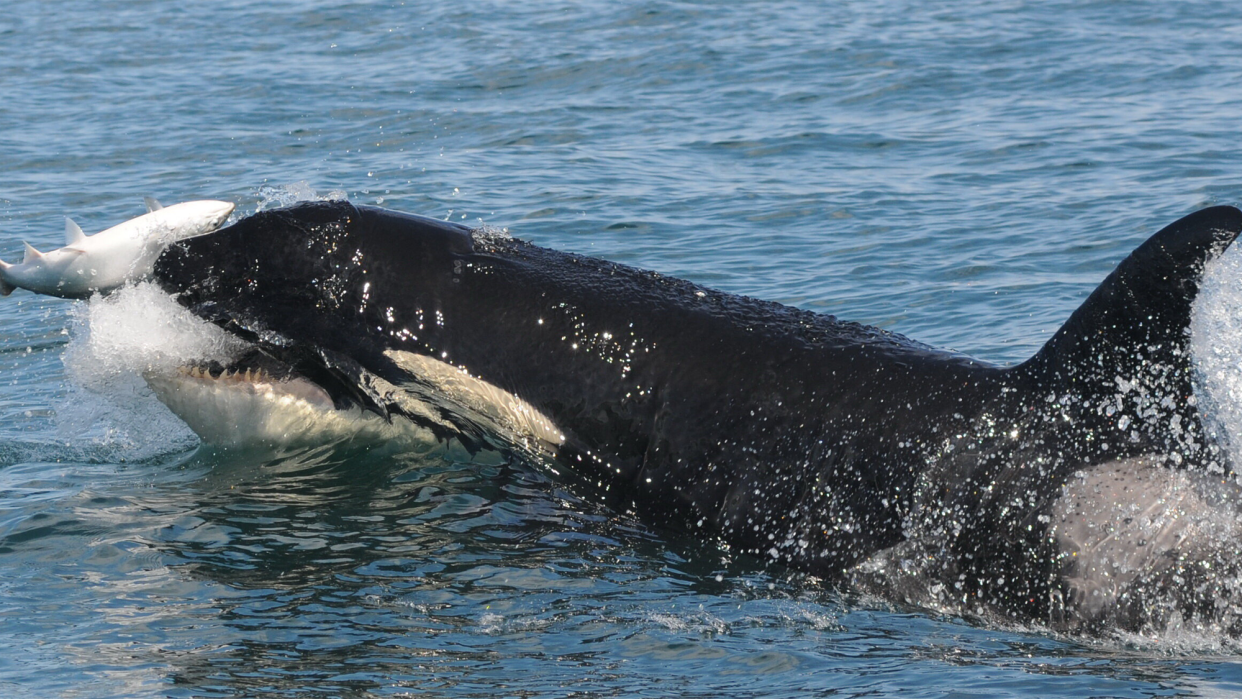Orcas only need one breath between dives

One of the planet’s most capable apex predators, orca whales can take on great white sharks all by themselves, attack boats, and have tight matrilineal family bonds. Now, a new study combined tagging data, physiology, drone footage, and statistical analysis to confirm a long-held assumption. Orcas take only one breath between their dives. The findings are described in a study published May 15 in the journal PLOS ONE and could have some important conservation implications.
The study observed 11 northern and southern resident killer whales off the coast of British Columbia, Canada. Resident killer whales are an ecotype that specialize in eating salmon, particularly large, fatty, and nutritious Chinook salmon. By comparison, transient or Biggs killer whales will eat bigger prey including other marine mammals, including sea lions, dolphins, and other whales.
“This study was really started to try to get a better understanding of the energy requirements of resident killer whales in BC,” study co-author and a University of British Columbia (UBC) Master’s candidate Tess McRae tells PopSci. “Our northern resident killer whales are threatened and our southern resident killer whales are endangered. So, it's really important for us to know how much energy these whales are using, and then kind of on the flip side, how much food these whales need to survive.”
[Related: How crafty orca whales hunt near submarine canyons.]
Like with humans, killer whales need to breathe more when they are engaged in higher energy activities like hunting for food or traveling long distances so that they can get more oxygen into their bodies. To monitor the whales in the wild, the team used tags suction cupped to 11 orcas to gather data, including diving depths, acoustics, and biological data.
“It’s essentially like putting a Fitbit on the animals,” study co-author and UBC post-doctoral research fellow Dr. Beth Volpov tells PopSci. “But because they're moving in their wild, we can't measure it directly. Studies have used drones or studies have used data loggers, but we combined them and synchronized it to the exact whales. If a whale is tagged, we're looking at that whale from above to the nearest second.”
After a certain amount of time, the suction cups are released, float up to the surface, and are collected by researchers. This data is used in tandem with drone footage taken by drone pilot Keith Holmes and the Hakai Institute. McRae could study this drone footage and assess what behaviors the whales were doing and count the number of breaths they were taking during different behaviors.
“The drone footage is very captivating to watch, but the challenging part for scientists is going from a few clips of video to meaningful numbers and data analysis,” says Volpov. “And that's where our collaboration with the statistics department helped a lot is translating the video into meaningful numbers to figure out what is going on.”
The team used an in depth statistical analysis by study co-author and PhD candidate Evan Sidrow from UBC’s statistics department to get a more accurate analysis of the orca’s breathing rates. The team found that orcas spend most of their time taking shallow dives. Most last less than one minute. The longest dive took about 8.5 minutes for one adult male. The whales in the study took 1.2 to 1.3 breaths per minute when they were resting and 1.5 to 1.8 while traveling or hunting. By comparison, humans take about 15 breaths per minute while at rest and 40 to 60 when exercising.
[Related: Toothed whales turned their vocal fry into a hunting superpower.]
“Killer whales are like sprinters who don’t have the marathon endurance of blue and humpback whales to make deep and prolonged dives,” study co-author UBC professor Dr. Andrew Trites said in a statement.
This mix of above- and below-the-water data, and statistical analysis gave the team a much better understanding of the orca’s activities.
The resident killer whales off the western coasts of the United States and Canada are threatened or endangered for a myriad of reasons. Reduced salmon availability, vessel strikes, chemical pollution, and noise pollution have all taken their toll on these whales. As of December 2023, there are an estimated 74 southern resident killer whales left. Northern resident killer whales are still threatened, but doing better with about 300 individual whales.
“Once we have what their breathing rates are, we can then calculate energy, and then calculate food requirements for these whales,” says McRae. “So, this is kind of the first piece to knowing how much food these whales need to survive, which is important for their conservation.”

